Crop Circles & the Geometry of Thresholds
By Robin Heath
We had the great pleasure of hearing Robin Heath deliver the keynote presentation at the Summer Crop Circle Lectures last year. It was one of the best lectures I’d heard him give in the long years I have known him; it was important, prescient and above all quite brilliant. He has very kindly given me permission to share that presentation with you and I will be posting Robin’s lecture notes and illustrations in a three part guest blog. I’d like to thank Robin for the opportunity to share his work on the Temporary Temples website – it’s a great honour!
 Robin Heath is an unaffiliated researcher into megalithic and ancient sciences. He is author of several books on Stonehenge, two of which are on sale at the monument. For more information, there are two websites:www.skyandlandscape.com and www.megalithicscience.org Robin lives on a smallholding in coastal West Wales with his wife Trish, two cats and three theodolites.
Robin Heath is an unaffiliated researcher into megalithic and ancient sciences. He is author of several books on Stonehenge, two of which are on sale at the monument. For more information, there are two websites:www.skyandlandscape.com and www.megalithicscience.org Robin lives on a smallholding in coastal West Wales with his wife Trish, two cats and three theodolites.
Please click on any of the images in this article for a larger view
PART THREE (Click for part one and two)
Some Conclusions from part two:
- The circle makers appear to be fully familiar with the traditional canon of measure.
- They incorporate this canon within beautiful (attention-seeking) designs, in plain sight, often adjacent to structures where the traditional canon was once employed, such as megalithic sites.
- It is possible that only people who understand both geometry and the canon of ancient measure can connect with the messages contained within crop circles.
- The principal (and apparently very gentle) message is that the circle builders are fully familiar with our cultural traditions, and not only the traditional canon of geometry and measure. They present their business card well.
QUESTION:
Are we ready to trust (them or ourselves), and relate more fully with the source of these messages and this phenomenon? Or are we failing to see the bigger picture?
The Twilight Zone
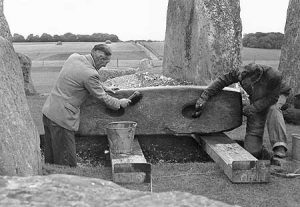 Here is a perfect pythonesque picture with which to make a very significant point. Heritage is today largely sanitised to provide the public with a quick, limited amusement experience, for them to take the required snapshot, so they can later tell their friends that they have ‘done’ Stonehenge, or ‘done Avebury’ or ‘done’ the Houses of Parliament or even ‘done’ the Turin Shroud.
Here is a perfect pythonesque picture with which to make a very significant point. Heritage is today largely sanitised to provide the public with a quick, limited amusement experience, for them to take the required snapshot, so they can later tell their friends that they have ‘done’ Stonehenge, or ‘done Avebury’ or ‘done’ the Houses of Parliament or even ‘done’ the Turin Shroud.
”Roll Up, Roll Up!…Trophy Tours, all the sites you ever wanted to see, without all that strain of trying to understand very much about any of them.”
Stonehenge has become about as bad as it can get as heritage displays go, and the photograph above shows how to not give the public what they want even when it’s obvious that it has to be exactly what the public needs to see. The photograph shows quite the best and biggest beautifully shaped and polished bluestone so far ever discovered at Stonehenge. After being rudely dug up in the mid 1950s this morticed bluestone lintel was ceremoniously brushed down, photographed and then reburied within a day or so. Why? Might it have been because it was then a case of out of sight, out of mind, being none too well aligned to the then model of prehistory? The bluestone lintel suggests there was once a proto-Stonehenge made from welsh bluestone, and predating the sarsen circle, i.e. pre-2450 BC. What other reason could possibly justify hiding away this most wonderful example of a polished bluestone, a ‘wonderful thing’ from maybe before 2800 BC. No one reburied King Tut’s grave goods, did they?
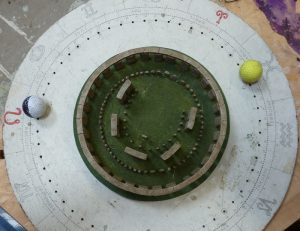
The astronomy ‘built in’ to Stonehenge can be understood by most schoolchildren, yet working models as shown above, which demonstrate how Stonehenge incorporates an accurate solar lunar calendar within its design, are notable by their absence at the Stonehenge visitor’s centre.
At the Visitor’s Centre at Stonehenge, where can one find the necessary explanations, and where is there a model (or a map) of the site that is anywhere near half as good as the century old models in the Devizes museum just down the road from there? And why were the modern Order of Druids, who have organised free of charge and peaceful midsummer events on the site for years, stopped from having their previously agreed three wall interpretation boards on display? Perhaps you can form your own conclusions. The reasons are clear.
Enough of Stonehenge remains for the monument to be accurately measured and assessed. Petrie (1880s), Atkinson (1950s and 1980s) and Thom (1973) all produced good working survey plans, most of which were originally given in units of feet or in megalithic yards, the unit eventually identified by Thom as being 2.722 feet in length (Alexander and Archibald Thom- Journal for the History of Astronomy, 1974 et al). I have undertaken theodolite survey work there, to check all this out. The dimensions are known as accurately as it is possible to know these from a structure that was erected over 4500 years before we were born. Instead of looking at what these dimensions tell us, archaeologists quibbled over the tiny differences between each of the above surveys.
Measuring up to Stonehenge
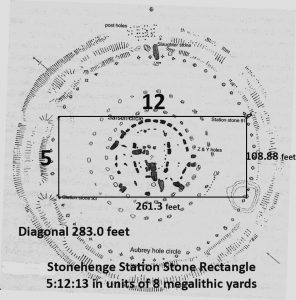
The geometry of Stonehenge: The sole linear feature within Stonehenge was formed by placing four large sarsen stones as the corners of a 5 by12 rectangle, as shown above. The units are 8 megalithic yards (MYs).
The Station stone rectangle (right) is 5 by 12 units, each unit being eight megalithic yards in length. This is 96 x 40 megalithic yards (MYs) of 2.722 feet (Thom’s later very slightly amended figure for the unit of length he discovered and named during the 50s). The illustration shows the dimensions in feet.
The two diagonals of this rectangle are therefore 104 MYs, thirteen of this same 8 x MY unit, in feet they are just over 283 feet in length. This is what is seen on the plan, the station stones being placed slightly inboard of the Aubrey circle.
The mean Sarsen circle diameter is 100.8 feet, making the mean circumference 316.8 feet, and these are the numerical frameworks that define a temple, as described by Plato. By Platos’s own definition, Stonehenge is seen to be a temple, but only when working in units of feet. The Station stone rectangle can be understood as a piece of sacred geometry attached to the outer Aubrey circle only when working in units of 8 megalithic yards. The monument is imprinted with these two metrological units.
Sarsen Circle (30 stones) Mean Diameter = 100.8 feet
Sarsen Circle Outer Diameter = 104.27 feet
Sarsen (Outer) circumference = 327.6 feet
Mean circumference =316.8 feet
Bluestone circle (59 stones?) Mean diameter 79.2 feet
Aubrey circle (56 markers) Mean diameter = 283.6 feet ~ 13 x 8 MY ~ 104.2MY
Aubrey circle (mean circumference) = 891 feet ~ 327.3 MY
The relationship between these two units can be seen dancing together within the dimensions of the two principal circles at Stonehenge, the Sarsen and Aubrey circles. But the magic doesn’t end there. The foot and the megalithic yard are also directly connected to two of the principal astronomical constants needed to define a soli-lunar calendar. If one lunar month (in time) is represented by the megalithic yard (as a length), then the foot represents the crucial time difference after twelve lunar months have elapsed ( 354.367 days) and the length of the solar year (365.2422 days. So, foot : megalithic yard = 10.875 : 29.530159, which, as a fraction is 0.368..,
(There are 12.368 months in a solar year.)
But then, the outer Sarsen circle diameter relates to the Aubrey circle diameter by almost exactly the same ratio, for, 104.27 : 283.6 = 0.368..
So when you hear an ‘expert’ tell you yet again that there is no highly cultured astronomical message built into the fabric of Stonehenge’s structure, you will know that this simply isn’t true. Something is being avoided here.
My own research recently revealed a prototype of the Station Stone structure in West Wales, close to the source of the bluestones. It is an unbelievably accurate 5:12:13 structure whose corners are defined by three well known and well visited prehistoric megalithic sites. These sites predate Stonehenge by over 500 years.
The 5:12:13 triangle defined by these three megalithic sites (photographs shown below) happens to be 88.59 times larger than the 5:12:13 triangle that can be fabricated from the station stone rectangle at Stonehenge. So What? This number means nothing, doesn’t it?
Well, no, actually. 88.59 turns out to be the time period in days for 3 lunar months (each of 29.530359 days) – so this triangle provides a soli-lunar calendar and observatory, and its defining sites are older than Stonehenge. The (later) Station Stone rectangle is a later scaled down version of it.
The Carningli triangle (above), combines time and space in ways that can churn the brain, for it is three lunar months, in days, larger, in megalithic yards, than the example at Stonehenge. The metrology and astronomy being represented (in feet) are both integrated. The structure is very accurately defined.
This geometric structure is the subject of a book Proto-Stonehenge in Wales (Bluestone Press, 2014 ISBN 978-0-95261-518-7, available from www.robinheath.info at 10 GBP + postage).
Here are some nice black and white image of the three sites involved, and their interrelationships on the landscape.
- Crugiau Cemaes
2. Carningli summit from Crugiau Cemaes
3. The level platform on Carningli summit
4. Llech y Drybedd from Crugiau Cemaes
5. Llech y Drybedd mirroring the 5:12:13 triangle.
So the neolithic circle builders clearly understood and had worked out a cosmological template where the apparently complex motions of the sun and moon could be integrated with respect to the earth’s annual orbit around the sun, and all within a Pythagorean triangle. This was an amazing achievement from the Neolithic. How did this beautiful discovery become lost to us, and when? Why hasn’t this achievement been recognised within the history of science?
Maybe it didn’t become lost to us, just forgotten by us, and much more recently. In 2010 I became aware that saints within the 6th century (AD) Celtic church in this region of Wales were replicating these megalithic triangular structures in a way that showed that they had been well versed in geometry and measure. Certain saints, all high born and from royal stock or having had parents who worked in the royal courts of the time, are discovered to have located their churches and other monuments on the landscape to form geometric patterns, most commonly the 3:4:5, and the equilateral triangle. Artefacts still present inside some of the churches display a knowledge of astronomy, geometry and the system of measure recognisable as an analogue of those employed by the megalith builders. This whole subject is currently in the advanced stages of becoming a book, whose working title is Dragons on the Landscape.
To whet the appetite, here are a few snippets to nibble on.
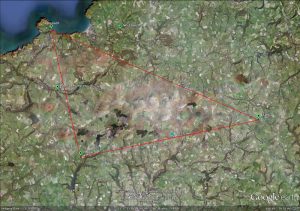
St Brynach’s main churches in West Wales were arranged as a 3:4:5 triangle, enclosing Carningli and the Preseli range.
St Brynach’s main Pembrokeshire churches are arrayed on the landscape to form the corners of a 3:4:5 and a 5:12:13 pythagorean triangle. This suggests that those megalithic sciences had survived into 6th century Wales, replacing those humungous monuments, the megaliths of the earlier epoch, with major church establishments.
But what after the 6th century? Can one find evidence of a later understanding of the megalith builder’s art? Yes, indeed yes.

Chartres Cathedral — a point on an accurate 3:4:5 triangle, whose other two points are Stonehenge and adjacent to St Samson’s Cathedral at Dol (Tronchet Abbey).
Here’s a 3-4-5 that is certain the raise a grin or two. Here we find that the most famous Gothic cathedral in the world, Chartres, was built at the corner of an accurate 3:4:5 triangle whose other two corners are marked by Stonehenge and a second cathedral, associated with a 6th century Celtic Saint from Wales, St Samson of Dol, marking the right angle. Cor, heck!
So, now the megalithic sciences are seen to have survived into the 12th century, and Chartres and Dol cathedrals linked up to perhaps the greatest megalithic cathedral in the world – Stonehenge. The truth is stranger than any fiction and the Da Vinci Code fiction is seen as pale and wan in comparison to this geometrical firework. Perhaps Dol and Chartres Cathedrals, together with Tronchet Abbey, were built on top of what had once been prehistoric sites, and the Catholic church tapped into the ancient geomantic secret or… the whole thing is a fantasy. Google Earth can quickly answer the matter.
But what about NOW, today, the present? Whether you want to look at this or not, the truth is that there are people, beings, entities or intelligences alive around the globe who well understand this material, and are apparently still employing it for uncertain reasons, reasons we haven’t got to grips with and haven’t much of a clue about. In fact our culture, and our educational system, has nothing at all to say about the matter. No cultural frame of reference presently exists, and we apparently do not know who knows these secrets of location.
Sounds familiar! Where else have we met this kind of impasse?
That’s right!, this kind of stuff behaves exactly like the crop circle phenomenon. Weird unexpected geometries are discovered over arable landscapes with no one owning them, no mention made of them within the educational curriculum and a couple of derisory articles appearing in the press each year to laugh them off.. These geometric gems last at most a few days before they are destroyed by harvesting.
But the other modern examples of the ancient art of landscape geometry endure. They do not get mowed within a few weeks or days, and the geometries they make, their networks, are like the crop circles, although not immediately visible from the surface of the planet are there in plain sight once one can look down from above onto this surface. Satellite and other aerial photography has recently made a new perspective visible for anyone who can use a computer.
However, there is nothing plain about why these things exist nor the intention that surely must lie behind these structures and networks.
A Capital Matter
The Capital cities triangle (shown below), marks the current centres of power in mainland UK, and it is marked out as the three corners of an accurate 5:12:13 pythagorean triangle. Here is perhaps the most intriguing and to some, perhaps the most sinister example to date, originally covered within an earlier work, Powerpoints (Bluestone Press, 2006)
This triangle is really accurate, and the 5:12:13 dimensions are expressed in units of 50,000 megalithic yards. It’s worth a wee ponder about this one!
Another triangle works almost as well. Try connecting Paris, London and the more recent capital of Germany, Berlin. If this disappoints compared to the triangle formed by joining up London, Edinburgh and Cardiff then mark the previous capital of Germany, Bonn, onto the triangle. There are other triangles to be found, but these two are more than enough to prove the point about cultural vacuums and the existence of modern geodetic and/or geomantic intentions.
Here meet another type of threshold, a true liminality, once again based on geometry, just as are crop circles. To uncover what lies beyond this threshold may well disturb something that has been protecting it for a very long time, a dragon, perhaps? To disturb such a beast may begin a process that reveals much of what has been buried from our past yet which has been employed in giant landscape experiments over seven millenia in .. geodetics?? .. geomantics?? stone circles.. magic??.. power??..crop circles?? … large industrial cities?? Problem is, we just don’t know by whom or why these things are there.
All of these things are POWER POINTS, and represent the built structures of human power expressed on the landscape.
What do they do to us?? I think it is high time we found out.
Summary
So No Worries, then?
What to do about this phenomenon? Discuss. Form a group. Visit sites. Work at it. Then come back and tell us what you’ve found. Sacred sites and power points are verbs, not nouns. They do things. To us, to the culture. Hang around in a few crop circles or megalithic sites and find out what they ‘do’. Get evicted from some others and discover why this happened. The answers are to be found out there on the landscape. Go find them!
Thank you and farewell for now. Enjoy your thresholds. Nothing would please me more than this subject stops being sub-liminal, and that more thinking people begin pondering and discussing freely what this blog has been about.
So hopefully, not The End.
Robin Heath
More Information & Notes
With thanks to Robin Heath for permission to use his material.
We have a selection of books by Robin on our Online Shop
Would you like to come and meet Robin and hear him speak in person?
Robin will once again be speaking at our annual conference The Summer Crop Circle Lectures – August 3rd, 4th & 5th 2018. Click here for more details and to book.


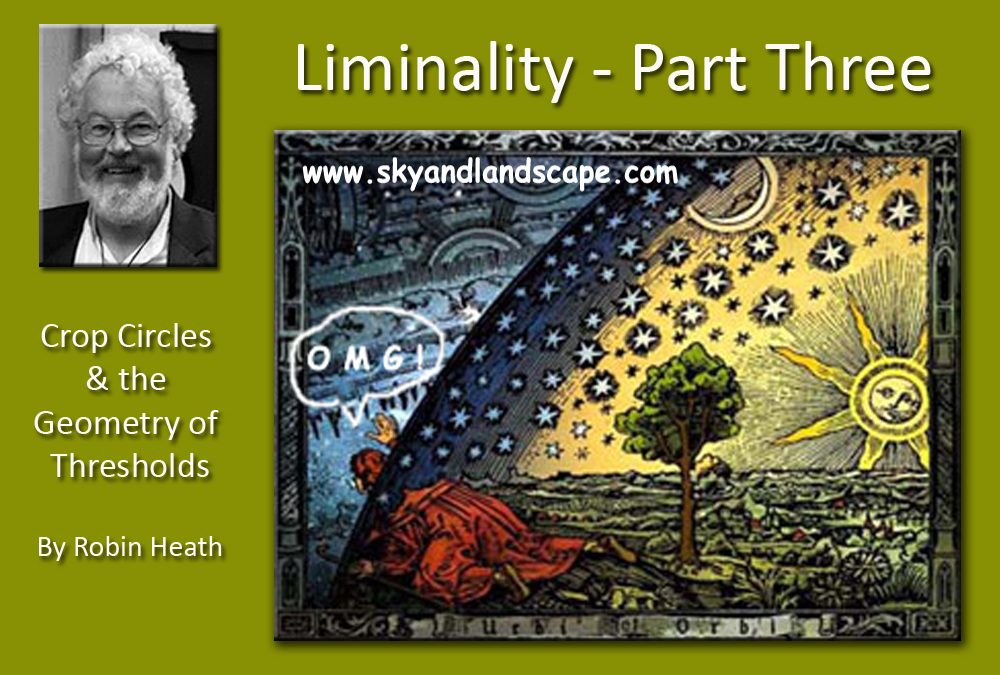
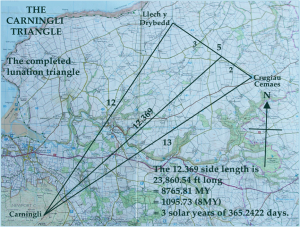





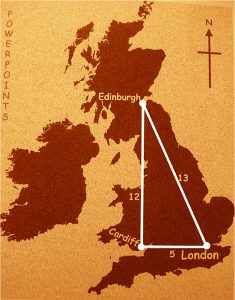
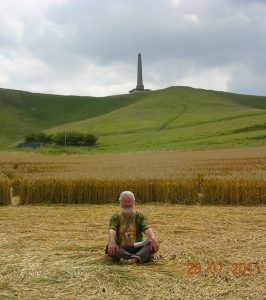
Wow , incredible alignments in such numbers it couldn’t be just by coincidence.
Thank You for the mind stimulus.
Keep up the good work , Lewis
Good article. I’m dealing with some of these issues as well..
It’s challenging to locate well-informed people on this topic, but you sound like you understand
what you’re talking about! Thanks
You should participate in a contest for one of the finest sites on the web.
I’m going to recommend this site!
This is a topic close to my heart cheers. Thanks
It’s challenging to find well informed individuals
on this issue, but you seem like you comprehend what you’re talking
about! Thanks
Really fine post, I surely adore this site, keep on it.
What a information of un-ambiguity and preserveness of valuable
knowledge regarding unpredicted emotions.
Informative article, exactly what I needed.
Remarkable! Its in fact awesome article, I have got much clear idea on the topic of from this
paragraph.
Hi there! I simply want to give you a big thumbs up for your great information you have got right here on this post.
I’ll be returning to your site for more soon.
There are clear connections between the ancient Vedic culture of India and the ancient British, with the Welsh language (spoken all across Britain prior to the Roman invasion) notably derived from Sanskrit. Megalithic sites are also strewn all across India.